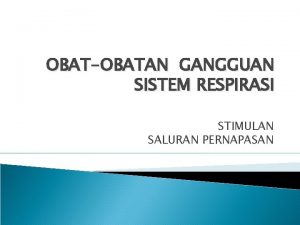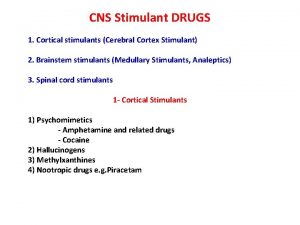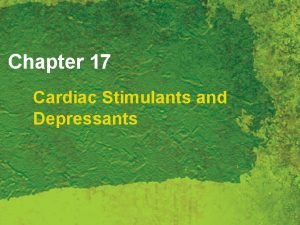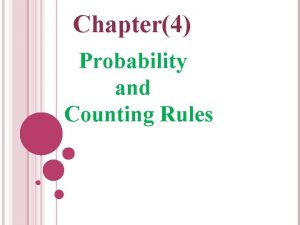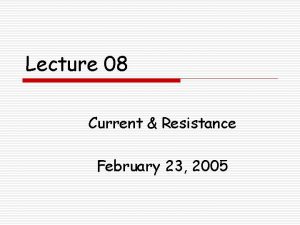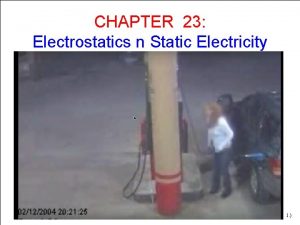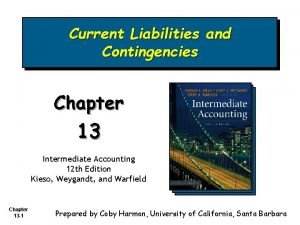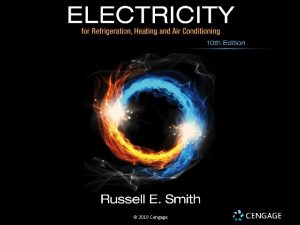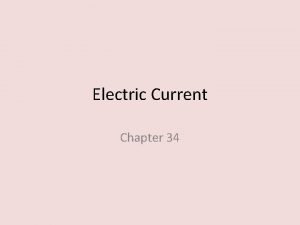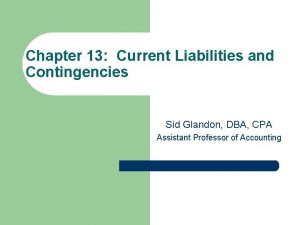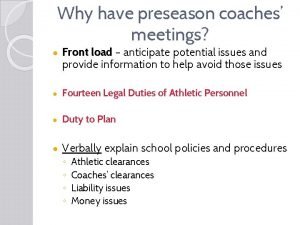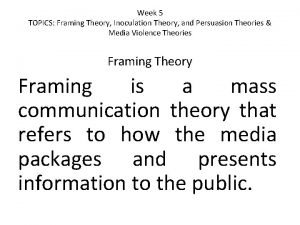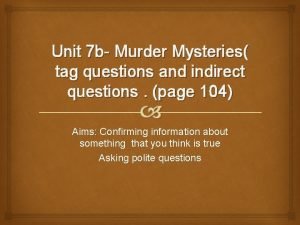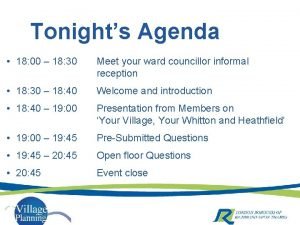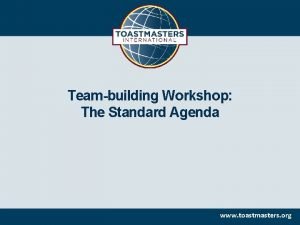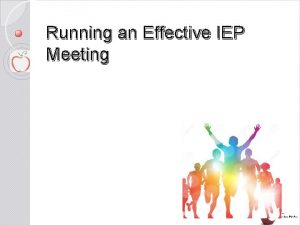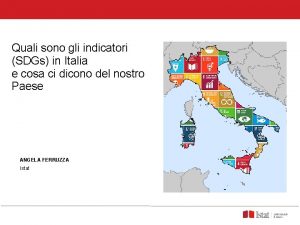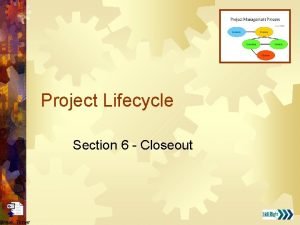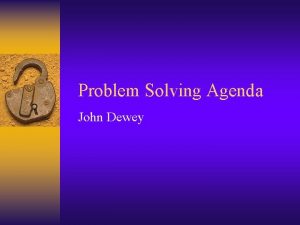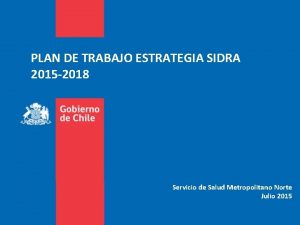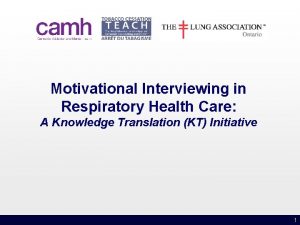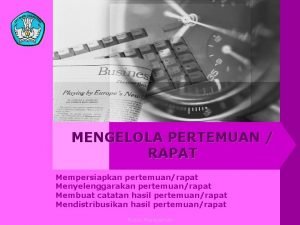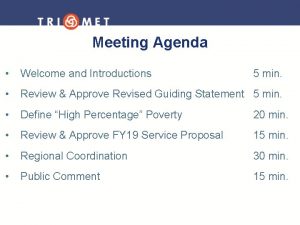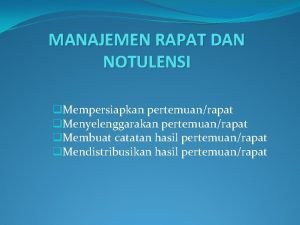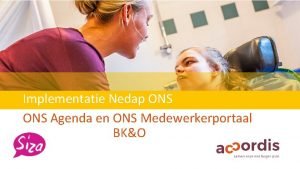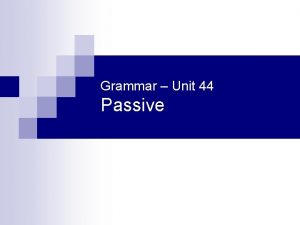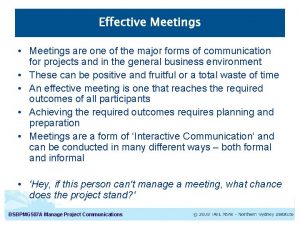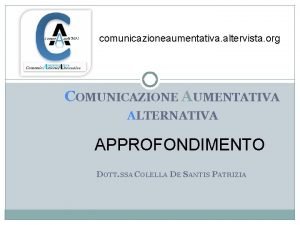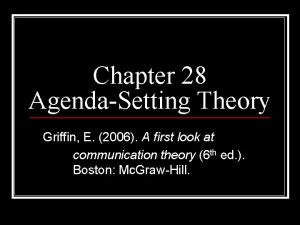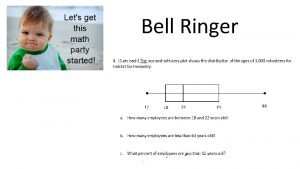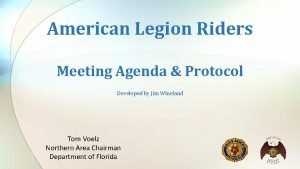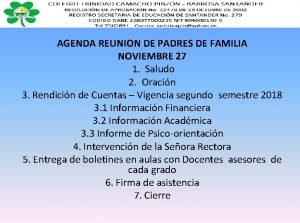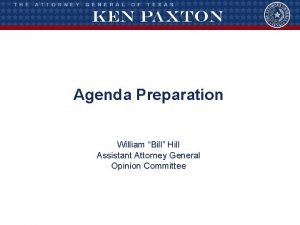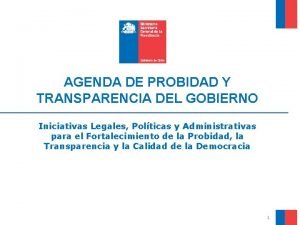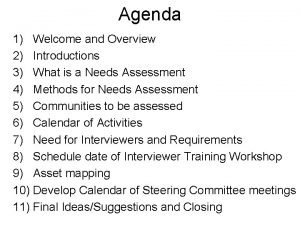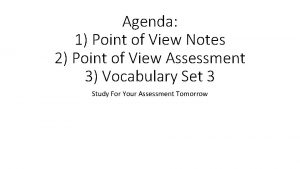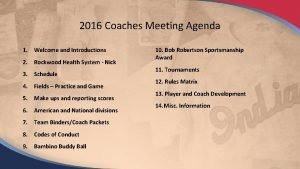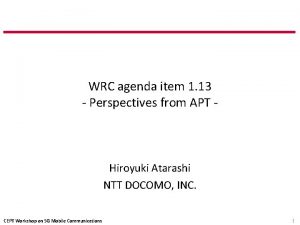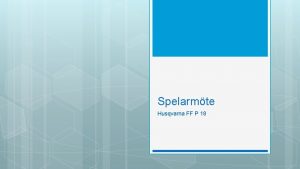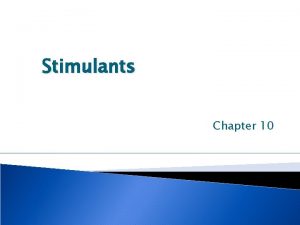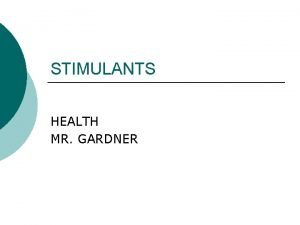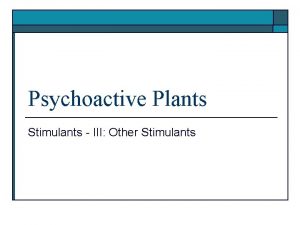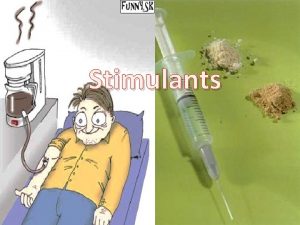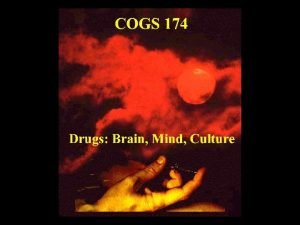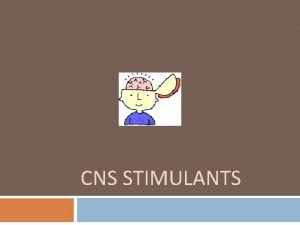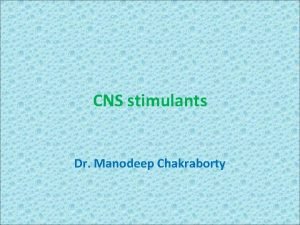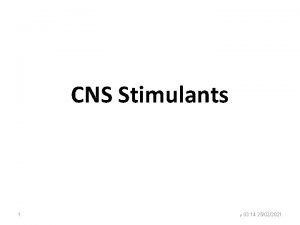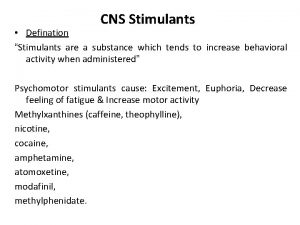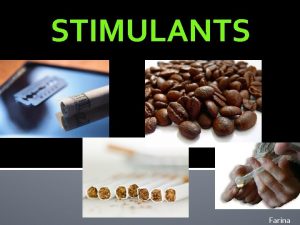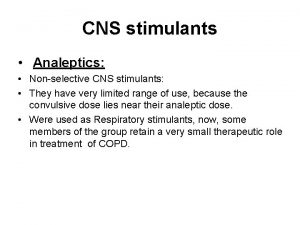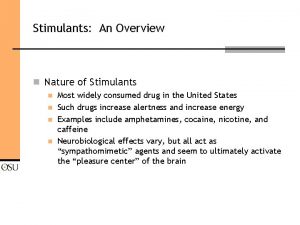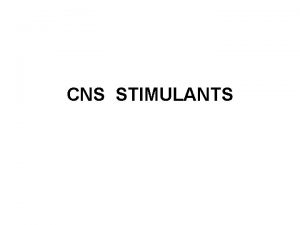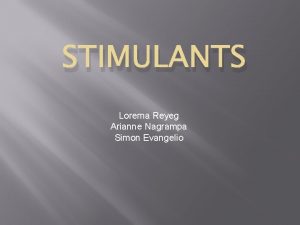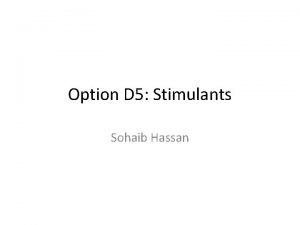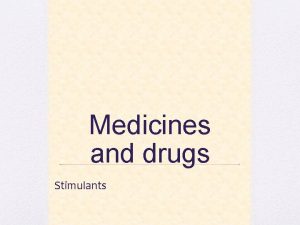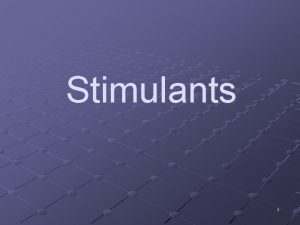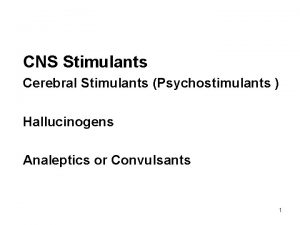AGENDA Current News Chapter 10 Stimulants 1 Current































































































































- Slides: 127

AGENDA • Current News • Chapter 10 (Stimulants) 1

Current News in the drug world • Joaquin "El Chapo" Guzman • https: //www. foxnews. com/category/ us/crime/drugs 61 -year-old Joaquín Archivaldo Guzmán Loera – better known as "El Chapo, " or "shorty" in Spanish slang – will finally face a court of law, accused of running the infamous Sinaloa drug cartel, generally regarded as the world's largest. 2

How many drug cartel are there? In Mexico �Tijuana Cartel. �Beltrán-Leyva Cartel. �Sinaloa Cartel. �Juárez Cartel. �La Familia Michoacana. �Gulf Cartel. �Los Zetas. The Sinaloa Cartel controls roughly 40% to 60% of Mexico's drug trade, with earnings at around $3 billion annually. Claimed in 2014 that he has killed 2, 000 -3, 000 people. 3 Is said to be semi-illiterate, receiving no formal education beyond third grade.

Chapter 10 STIMULANTS RCC Instructor Ed Ramirez 4

Stimulants cause the user to: �feel energized and experience a sense of �increased energy and a state of �euphoria. Don’t we all want to feel happy? Well about 12 million Americans have abused Methamphetamines and about 1. 5 million are addicted 5

Stimulants What are they? �Examples of stimulants are: �caffeine �nicotine �amphetamines, (Methamphetamines) �Cocaine These drugs are referred to as Large pupil Uppers and are CNS Stimulants 6

Two principal classifications 1. Major Stimulants Examples are: Amphetamines, cocaine 2. Minor Stimulants Caffeine 7

Major Stimulants �Increase alertness �Excitation �Euphoria Referred to as UPPERS 8

9

Amphetamines �Amphetamines are potent synthetic central nervous system (CNS) Stimulants �Cause dependency �Can be legally prescribed by physicians (examples) 1) Appetite Control 2) Narcolepsy 3) Narcolepsy 10

History of Amphetamines �First synthesized by German Pharmacologist L. Edeleano in 1887 �In 1927, Gordon Alles gave a firsthand account of its effects �Reduced fatigue �Increased alertness �Caused a sense of confident euphoria �In 1932, Benzedrine inhalers became available as a nonprescription medication 11

Facts on Stimulants The first therapeutic use of amphetamines was in “inhalers” to treat nasal congestion 12

Benzedrine Inhalers Available OTC until 1949 13

Widely Abused From 1949 till 1971 (loophole in law) � 1971, all potent amphetamine-like compounds in nasal inhalers were withdrawn from the market Note: The Benzedrine inhalers became widely abused for their stimulant action 14

Early On, treatments were for: �Obesity �Seasickness �Alcoholism �Hiccups �Bed-wetting �Depression �Schizophrenia �Morphine and codeine addiction �Heart block �Head injuries �Caffeine mania 15

History of Amphetamines (continued) “Black market” use flourished �Widely used in World War II to counteract fatigue �Other users: Korean War soldiers, truck drivers, homemakers, high achievers under pressure �Air Force still gives pilots low doses of amphetamine to help them maintain alertness 16

Got out of hand Homemakers used them to control weight and to control boredom from unfulfilled lives. At the height of one United States epidemic in 1967, some 31 million prescriptions were written for anorexiants (diet pills) alone. 17

Some common slang Speed Crystal Meth Bennies Dexies Uppers Pep pills Diet pills Jolly beans 18 Hearts Footballs White crosses Whites Crank Ice Co-pilots Each form of stimulants have there specific slang words, examples on next slide

Slang Cont’d Cocaine Coke, Snow, Nose Candy, Flake, Blow, Big C, Lady, White, and Snowbirds, Powder, Crack Cocaine Crack, rock, freebase, Cookie, Amphetamines Speed, Uppers, Ups, Black beauties, Pep pills, Co-pilots, Bumblebees, Hearts, Benzedrine, Dexedrine, Footballs, and Biphetamine Methamphetamines Crank, Crystal methadrine, and Speed 19

How Amphetamines Work �Synthetic chemical similar to the natural neurotransmitters such as norepinephrine, dopamine, and epinephrine (adrenaline) �Increase the release and block the metabolism of these catecholamine(Pronounced cat·e·chol·amine. ) substances, as well as serotonin, in the brain and nerves associated with the sympathetic nervous system 20

How Amphetamines Work (continued) �Amphetamines can cause �“Fight-or-flight” response (Slide 25) will explain �Alertness �Anxiety, severe apprehension, or panic �Potent effects on dopamine in the reward center of the brain 21

SHORT-TERM EFFECTS �Loss of appetite �Increased heart rate, blood pressure, body 22 temperature �Dilation of pupils �Disturbed sleep patterns �Nausea �Bizarre, erratic, sometimes violent behavior �Hallucinations, hyperexcitability, irritability �Panic and psychosis �Convulsions, seizures and death from high doses

LONG-TERM EFFECTS �Permanent damage to blood vessels of 23 heart and brain, high blood pressure leading to heart attacks, strokes and death �Liver, kidney and lung damage �Destruction of tissues in nose if sniffed �Respiratory (breathing) problems if smoked �Infectious diseases and abscesses if

LONG-TERM EFFECTS 24 • Malnutrition, weight loss • Severe tooth decay • Disorientation, apathy, confused exhaustion • Strong psychological dependence • Psychosis • Depression • Damage to the brain similar to Alzheimer’s disease, 3 stroke and epilepsy

25 http: //www. drugfreeworld. org/drugfacts/crystalmeth/the-deadly-effects-of-meth. html

Fight or Flight �The response of the sympathetic nervous system to a stressful event, preparing the body to fight or flee, associated with the adrenal secretion of epinephrine and characterized by increased heart rate, increased blood flow to the brain and muscles, raised sugar levels, sweaty palms and soles, dilated pupils, and erect hairs. https: //www. youtube. com/watch? v=Jy. Ue 9 Th 3 l. NM&list=PLxt 3 E 0 wtpgjy. Kg 7 ttc. Hokg. GL 0 u. Uf. D-cp 7 26 the instinctive physiological response to a threatening situation, which readies one either to resist forcibly or to run away.

Fight or flight Cont’d https: //www. youtube. com/watch? v=mt. Rrx. NTnyh 8 27

What Amphetamines can do �Behavioral stereotypy “or getting hung up” (meaningless repetition of a single activity) Repetitious thought or act for hours such as (taking objects apart, i. e. radios, clocks) 28

Approved Uses of Amphetamines 1. Narcolepsy 2. Attention Deficit Hyperactivity Disorder (ADHD) 3. Weight Reduction 29

Narcolepsy The term “narcolepsy” comes from the Greek words for “numbness” and “seizure” A person who has narcolepsy falls asleep as frequently as 50 times a day if he or she stays in one position for very long. Taking low doses of amphetamines help to keep narcolepsy people alert. 30

31

ADHD Behavioral problem in children and adolescents. How is this treated? With an UPPER? The most common type of medication used for treating ADHD is called a "stimulant. " Although it may seem unusual to treat ADHD with a medication considered a stimulant, it actually has a calming effect on children with ADHD. 32

Weight Reduction �Obesity Amphetamines help to control appetite via the hypothalamus of the brain �Thus, the user decreases his or her food intake 33

Figure 10. HN 01: Here and Now: Meth and Crime 34

Side Effects of Therapeutic Doses The two principal side affects are: �Abuse �Cardiovascular toxicities �Increased heart rate �Elevated blood pressure �Damage to blood vessels 35

Current Misuse �Decline in abuse in the late 1980 s and early 36 1990 s �In 1993 the declines were replaced by an increase � 2001, approximately 5. 6% of high school senior used amphetamines at least each month. �Because of the potential for serious side effects. U. S. medical association have asked all physicians to be more careful about prescribing amphetamines

Current Misuse Cont’d �Amphetamine abusers commonly administer a dose of 10 to 30 milligrams �Depressants such as alcohol, benzodiazepine, or barbiturates can relieve the discomfort of being “wired. ” 37

Speed �A potent and commonly abused form of amphetamine is “Speed, ” an illegal methamphetamine. �Meth is a highly addictive stimulant that is often cheaper and much longer lasting then cocaine 38

Speed An injectable methamphetamine used by drug addicts White, odorless, bitter-tasting crystalline powder for injection 39

Methamphetamine �Because of the cost ranges from $20 to $300 per gram, it is sometimes known as the “poor man’s cocaine. ” �Illicitly manufactured (no expertise in chemistry) �Referred to as “cookers” 40

Figure 10. HN 02: Here and Now: Agassi Admits Using Meth 41

42 Figure 10. HN 03: Here and Now: Chemical Toxins Associated with Meth Labs

Patterns of High-Dose Use �Amphetamines can be taken �Orally �Intravenously (speed freak) �Smoked (Ice) “smokable from of meth” Ice 43

Patterns of High-Dose Use �Ice- Smokable form of meth �Rush- initial pleasure after amphetamine use �High- lasts 4 to 16 hrs includes feeling of energy and power �Run- Intense use of stimulant including multiple administrations over a period of days 44

Patterns of High-Dose Use �Binge- Similar to a run, but shorter duration �Tweaking- repeated administration of meth to maintain the high �Hyperpyrexia- elevated body temperature 45

46 Figure 10. HL 01: Holding the Line: Cold Restrictions

Figure 10. SS 01: Signs and Symptoms: Summary of the Effects of Amphetamines on the 47 Body and Mind

“Meth” Depending on the method of manufacturing, meth may range in color from white to brown; pink to red or in various shades of yellow or green. Meth can come in pill form, powder or chunks. Common street names for meth include: "speed", "chalk", "ice", "crystal", "crank" and "glass". Crystal meth resembles rock candy, or chunks of ice or crystal. Seventy to eighty percent of the meth used illegally in Minnesota comes from other states. Twenty to thirty percent of the illegal meth in Minnesota is made in clandestine labs. 48

Meth 49

Figure 10. UN 01: Devastation of oral structures called "meth mouth" sometimes is associated with methamphetamine addiction. 50 © AP Images/Courtesy of Dr. Douglas Damm/The News & Observer.

51 Figure 10. HN 04: Here and Now: Small Towns, Big Problems: The Female Methamphetamine Epidemic

Methamphetamine Labs can be set up almost anywhere and pose a serious threat to occupants as well as to law enforcement officers and emergency personnel. Why? 52

Meth Labs 53

Meth Labs 54

TREATMENT Admissions for treatment of methamphetamine addiction have more than doubled since 2000 The dependence disorder caused by the amphetamines is very hard, but not impossible, to treat successfully. 55

Figure 10. SS 02: Signs & Symptoms: A Daughter's Plea to A Meth Mother 56

Amphetamine Combinations Amphetamines are frequently used in conjunction with a variety of other drugs such as barbiturates, benzodiazepines, alcohol, and heroin. Opiate narcotics users in combination with amphetamines or cocaine are called “speedballs” 57

“Designer” Amphetamines Underground chemists can synthesize drugs that mimic the psychoactive effects of amphetamines. �MDMA (Ecstasy) “CLUB DRUG” �Designer amphetamines sometimes differ form the parent compound by only a single element 58

Figure 10. T 01: Designer Amphetamines 59

MDMA (Ecstasy) �Continues to be the most popular among the designer amphetamines �Schedule 1 drug � 39% of Stanford grads reported to have used 60

Ecstasy Raves are high energy, all night dance parties attended by hundreds to even thousands of teens and people in their twenties. They originated in England were traditionally held in large warehouses or open outdoor area and later moved to established clubs. 61

Figure 10. UN 02: Because of its frequent association with raves, clubs, and bars, MDMA is known as a club drug. 62 © anthonymooney/Shutterstock, Inc.

Figure 10. UN 03: Dancers at a "rave" often consume Ecstacy for sensory enhancement. 63 © Gregor Kervina/Shutter. Stock, Inc.

Performance Enhancer �Drugs taken to increase physical or mental endurance to embellish one’s performance 64

Figure 10. B 01: Prescription for Abuse: Colleges are Laboratories for Drug Neuroenhancing 65

Half Way Cocaine “A 9 -year span” From 1978 to 1987, the United States experienced the largest cocaine epidemic in history 66

Cocaine 1982, an article in “Scientific American” stated that cocaine was no more habit forming than potato chips This perception has clearly been proven false: Cocaine is so highly addictive that it is readily self -administered not only by human beings, but also by laboratory animals 67

Cocaine addiction can occur very quickly and be very difficult to break. Animal studies have shown that animals will work very hard (press a bar over 10, 000 times) for a single injection of cocaine, choose cocaine over food and water, and take cocaine even when this behavior is punished 68

Cocaine There is no better substance than cocaine to illustrate the “love hate” relationship that people can have with drugs 69

Cocaine Can Damage the Way the Brain Works � Although cocaine may make someone feel pleasure for a while, later it can damage the ability to feel pleasure. Research suggests that long-term cocaine use may reduce the amount of dopamine or the number of dopamine receptors in the brain. � When this happens, nerve cells must have cocaine to communicate properly. Without the drug, the brain can't send enough dopamine into the receptors to create a feeling of pleasure. � If a long-term user of cocaine or crack stops taking the drug, the person feels an extremely strong craving for it, because without it he or she can't feel nearly as much pleasure. 70

History of Cocaine Use Cocaine has been used as a stimulant for thousands of years. Its history can be classified into three eras, based on geographic, social, and therapeutic considerations. 71

The First Cocaine Era South American Indians living in the regions of the Andean Mountains, dating back to about 2500 B. C. in Peru The Erythroxylon coca shrub- cocaine played a major role in the advancement of this isolated civilization Explorer Amerigo Vespucci in 1499 “Coca chewing” 72

History of Cocaine Ancient Inca records indicate that coca chewing was appreciated for giving increased strength and stamina to workers who labored in their harsh mountainous environment Coca leaves were brought back to Europe from the Spanish colonies soon after the conquest of the Incas 73

Figure 10. UN 04: An Andean chews coca leaves. 74 © David Mercado/Reuters/Landov

75

Coca Leaves 76

History of Cocaine Cont’d �The second cocaine era (last half of the 19 th century) Corsican chemist Angelo Mariani removed the active ingredients from the coca leaf and identified “cocaine. ” Purified cocaine was added into cough drops and Boredaux wine called Vin Mariani 77

Figure 10. UN 05: The "refreshing" element in Vin Mariani was coca extract. 78

79

Sigmund Freud In 1884: Mr. Freud’s report on cocaine, “Uber Coca” Recommended this “magical drug” for an assortment of medical problems including depression, hysteria, nervous exhaustion, digestive disorders, etc. Sigmund Freud was an Austrian neurologist best known for developing theories and techniques of psychoanalysis. Also known as the “Father of Psychology” 80

Figure 10. UN 06: Sigmund Freud was an early advocate of cocaine, which he referred to as "cure-all. " 81 © Mary Evans Picture Library/age fotostock

82

83

Original Coca Cola The original “Coca Cola” was a cocainecontaining tonic developed in the late 1800 s tonic 84

Coca Cola In May, 1886, Coca Cola was invented by Doctor John Pemberton, a pharmacist from Atlanta, Georgia. The name was a suggestion given by John Pemberton's book keeper Frank Robinson. 85

The Original Coca Cola contained “the tonic properties of the wonderful coca plant” Advertised that it was for exhaustion (Coca-Cola, by the way, used to literally contain cocaine in its original formula. The practice was halted in 1903, but the name persisted. The "coca" part of "coca-cola" is derived from the coca plant, and the "kola" comes from the kola nut which also flavored the original beverage. ) http: //www. naturalnews. com/032658_Coca. Cola_cocaine. html 86

What about Coca-Cola �If there was cocaine in the original coke, what happens to the Coca in Coca-Cola? “The Stepan Company” in Maywood, New Jersey Carries out a chemical procedure that has been one of the primary responsibilities of the company since 1903 87 The plant is the only commercial entity in the USA authorized by the Drug Enforcement Administration to import coca leaves, which come primarily from Peru. Approximately 100 metric tons of dried coca leaf are imported each year. The cocaine-free leaves are sold to The Coca Cola Company, while the cocaine is sold to Mallinckrodt, a pharmaceutical firm, for medicinal purposes

The Third Cocaine Era In 1980 s came third major era of cocaine use Cocaine Production The coca crop is by far the most profitable agricultural venture in South America Cocaine Processing- 88

Cocaine Administration �Form of administration important in determining intensity of cocaine’s effects, its abuse liability, and likelihood of toxicity �Orally (Chewing of the coca leaf) �Inhaled into the nasal passages (“Snorting”) �Injected intravenously �Smoked (Freebasing, Crack) �crack babies 89

Figure 10. HN 05: Here and Now: Bloody "Drug War" Fought in Streets of Mexico 90 Data from Tuckman, J. “Mexico’s Drug Wars: The End of an Exceptionally Bloody Week. ” Guardian. co. uk. 29 October 2010. Available at: http: //www. guardian. co. uk/world/2010/oct/29/mexicodrug-wars-bloody-week. Accessed March 16, 2011.

Cocaine Processing �Leaves are harvested two to four times per year and used to produce coca paste �About 80% pure �Purified cocaine is adulterated (cut) (contaminating substances are mixed in to dilute the drugs) 91

Figure 10. UN 07: Cocaine is often sold in a form that appears like small rocks. 92 Courtesy of Orange County Police Department, Florida.

Figure 10. 01: Trends in cocaine and crack use by high school seniors, 19752010. Data from Johnston, L. D. , P. M. O'Malley, J. G. Bachman, and J. E. Schulenberg. Monitoring the Future: National Survey Results on Drug Use, 1975– 2012: Volume I: 93 School Students. Ann Arbor, MI: Institute for Secondary Social Research, The University of Michigan, 2013.

Freebasing 94

Figure 10. UN 08: Freebasing paraphernalia. A water pipe is often used to smoke freebased cocaine, or "crack. " 95 © David Hoffman Photo Library/Alamy Images

Paraphernalia for Freebasing 96

“Crack” Between 1985 to 1986 A special type of freebased cocaine known as “crack” or “rock” appeared 97

Figure 10. T 03: Cocaine Abstinence Phases 98

“Crack Babies” 99

Figure 10. UN 09: Infants born to crack-using mothers are often premature. 100 © Gert Vrey/Fotolia

Cocaine and Pregnancy �Cocaine babies �Microencephaly �Reduced birth weight �Increased irritability �Learning and cognitive defects 101

Pharmacological Effects of Cocaine �Cocaine can have profound effects on several vital systems in the body It is believed that the principal action of the drug is to block the reuptake and inactivation of dopamine, noradrenaline, and adrenaline 102

Major Pharmacological Effects Cont’d CNS Effects � Cardiovascular System Effects � Local Anesthetic Effects � 103

Cocaine Withdrawal Considerable debate has arisen as to whether cocaine withdrawal actually happens and, if so, what it involves. 104

Treatment of Cocaine Dependence Cocaine dependency is classified as a psychiatric disorder by the American Psychiatric Association �Is highly individualistic and has variable 105 success �Principal strategies include inpatient and outpatient programs �Drug therapy is often used to relieve cocaine craving and mood problems �Psychological counseling, support, and a highly motivated patient are essential

Important Questions to treat 1. 2. 3. 4. 5. 106 Why did the patient begin using cocaine, and why has dependency occurred? What is the severity of abuse? How has the cocaine been administered? What is the psychiatric status of the patient? What other drugs are being abused along with the cocaine?

Minor Stimulants Caffeine is the World’s most frequently used stimulant and perhaps its most popular drug 107

Theobromine Means “divine leaf” Coffee Tea Soft drinks Chocolate 108

Minor Stimulants 109 The chemical nature of caffeine Caffeine belongs to a group of drugs that have similar chemical structures and are known as the xanthines. To understand the unique role that caffeine plays in United States society, it is useful to gain perspective on its most common sources: unfermented beverages

Minor Stimulants Coffee- derived from the beans of several species of coffea plants. The coffea arabia plant grows as a shrub or small tree and reaches 4 to 6 meters in height when growing wild. Coffee beans are primarily cultivated in South America and East Africa 110

Minor Stimulants The name coffee was likely derived from the Arabian word Kahwa or named after the Ethiopian prince Kaffa. 111

Coffea arabica 112

Coffee 113

114 Figure 10. T 04: Caffeine Content of Beverages and Chocolate.

Tea is made from the Camellia sinensis plant, which is native to China and parts of India, Burma, Thailand, Laos, and Vietnam. 115

Soft Drinks 116

Soft Drinks Cont’s Soft drinks are the second most common source of caffeine. In general, the caffeine content per 12 -ounce serving ranges from 30 to 60 milligrams. 117

Chocolate Contains small amounts of caffeine 118

Physiological Effects of Xanthines �CNS effects �Enhances alertness, causes arousal, diminishes fatigue �Adverse CNS effects �Insomnia, increase in tension, anxiety, and initiation of muscle twitches �Over 500 milligrams—panic sensations, chills, nausea, clumsiness �Extremely high doses (5 to 10 grams)— seizures, respiratory failure, and death 119

Physiological Effects of Xanthines 120 Cardiovascular effects �Low doses—heart activity increases, decreases, or does nothing �High doses—rate of contraction of the heart increases, minor vasodilation in most of the body, cerebral blood vessels are vasoconstricted Respiratory system effect �Can cause air passages to open and facilitate breathing

Physiological Effects of Xanthines (continued) �Caffeine intoxication �Caffeinism �Restlessness, nervousness, 121 excitement, insomnia, flushed face, diuresis, muscle twitching, rambling thoughts and speech, stomach complaints �Caffeine dependence- “causes limited dependence” for most people

OTC Drugs Containing Caffeine or Caffeine-like Stimulants �Analgesics �Stay-awake products �Picker-uppers �Decongestants �Herbal stimulants �Ephedrine 122

Figure 10. UN 10: OTC caffeine products frequently contain the equivalent of 2– 3 cups of coffee and are used to stay awake. 123 © Jones and Bartlett Learning. Photographed by Kimberly Potvin

Figure 10. HN 06: Here and Now: Caffeine Emergencies 124 Data from Shute, N. “Americans Young and Old Crave High-Octane Fuel, and Doctors Are Jittery. ” U. S. News and World Report (29 April 2007): 58– 68.

Figure 10. T 05: Caffeine Withdrawal Syndrome 125

Figure 10. HN 07: Here and Now: Diet Pills Are Russian Roulette for Athletes 126 Data from Shipley, A. “Bechler’s Diet Pills Draw Scrutiny. ” Washington Post (19 February 2003): D-1; and Mayo Clinic Health. “Ephedra (Ephedra sinica)/ma Huang. ” Health Information (2010 b). Available http: //mayoclinic. com/health/ephedra/NS_patientephedra. Accessed May 3, 2011.

Questions? 127
 Respiratory stimulants
Respiratory stimulants Dinoprostone gel uses
Dinoprostone gel uses Cortical stimulants
Cortical stimulants Cardiac stimulants and depressants
Cardiac stimulants and depressants Agenda sistemica y agenda institucional
Agenda sistemica y agenda institucional What are hard news
What are hard news Chapter 4 probability and counting rules
Chapter 4 probability and counting rules Both of the statues on the shelf is broken
Both of the statues on the shelf is broken Line current and phase current
Line current and phase current Phase to phase voltage
Phase to phase voltage Semiconductor
Semiconductor Ac systems lesson 4
Ac systems lesson 4 Drift current and diffusion current in semiconductor
Drift current and diffusion current in semiconductor What is diffusion current and drift current
What is diffusion current and drift current Gm formula for mosfet
Gm formula for mosfet In a ∆-connected source feeding a y-connected load
In a ∆-connected source feeding a y-connected load Infineon
Infineon Diffusion current density
Diffusion current density Chapter 3 shielded metal arc equipment setup and operation
Chapter 3 shielded metal arc equipment setup and operation Touch current vs leakage current
Touch current vs leakage current Non planar circuit
Non planar circuit Things fall apart chapter 19
Things fall apart chapter 19 Chapter 17 darwin's theory of evolution
Chapter 17 darwin's theory of evolution Www.bf.tku.edu.tw/files/news chapter 17
Www.bf.tku.edu.tw/files/news chapter 17 Chapter 23 electric current circuit happenings
Chapter 23 electric current circuit happenings Electricity
Electricity Contingent liability journal entry
Contingent liability journal entry Intermediate accounting chapter 13
Intermediate accounting chapter 13 Chapter 7 alternating current
Chapter 7 alternating current What is provision in accounting with example
What is provision in accounting with example Chapter 34 electric current
Chapter 34 electric current Current liabilities and contingencies chapter 13
Current liabilities and contingencies chapter 13 Preseason coaches meeting agenda
Preseason coaches meeting agenda Meet and greet agenda
Meet and greet agenda Background color
Background color Inoculation marketing
Inoculation marketing Football coaches meeting agenda
Football coaches meeting agenda Projektbanken aau
Projektbanken aau Agenda web tag questions
Agenda web tag questions Belinda doyle
Belinda doyle Cft meeting in company
Cft meeting in company Tonight's agenda
Tonight's agenda Agenda q class
Agenda q class Modals exercise
Modals exercise Transformative agenda meaning
Transformative agenda meaning The wieners agenda
The wieners agenda Kelebihan agenda setting
Kelebihan agenda setting Tender briefing agenda
Tender briefing agenda The standard agenda
The standard agenda Today meeting or today's meeting
Today meeting or today's meeting Theatre with a specific agenda
Theatre with a specific agenda Graduation meeting
Graduation meeting Sales pitch agenda
Sales pitch agenda Iep meeting agenda
Iep meeting agenda Agenda 2030
Agenda 2030 Pta agenda
Pta agenda Project close out meeting
Project close out meeting Product qbr
Product qbr Dewey's problem solving method
Dewey's problem solving method Sidra norte urgencia
Sidra norte urgencia Introduction meeting agenda
Introduction meeting agenda Pengurusan mesyuarat kerajaan
Pengurusan mesyuarat kerajaan Scrum of scrums agenda
Scrum of scrums agenda Permissionless agenda
Permissionless agenda Python mtv
Python mtv Architecture meeting agenda
Architecture meeting agenda Change talk worksheet
Change talk worksheet Mentoring kick off meeting
Mentoring kick off meeting Salah satu teknik pembuka rapat adalah...
Salah satu teknik pembuka rapat adalah... Mef 30
Mef 30 Agenda welcome and introductions
Agenda welcome and introductions Agenda welcome and introductions
Agenda welcome and introductions Math department meeting agenda
Math department meeting agenda Contoh agenda rapat
Contoh agenda rapat Kick off meeting agenda for construction project
Kick off meeting agenda for construction project Job interview agenda template
Job interview agenda template Agenda 2030
Agenda 2030 Amu agenda
Amu agenda Site initiation visit in clinical trials ppt
Site initiation visit in clinical trials ppt Nedap ons app inloggen
Nedap ons app inloggen Interorganizzativo significato
Interorganizzativo significato Iep meeting agenda
Iep meeting agenda How to prepare agenda for meeting
How to prepare agenda for meeting Grooming etiquette meaning
Grooming etiquette meaning Reported speech objectives
Reported speech objectives Unit 44 passive 3
Unit 44 passive 3 Cio forum gartner
Cio forum gartner Manifestation meeting for 504
Manifestation meeting for 504 Troop committee meeting agenda
Troop committee meeting agenda Steering committee meeting agenda sample
Steering committee meeting agenda sample Research agenda example
Research agenda example Tableau agenda
Tableau agenda Pre construction meeting agenda example
Pre construction meeting agenda example Agendaweb conditionals
Agendaweb conditionals Agenda visiva tabelle caa da stampare
Agenda visiva tabelle caa da stampare Second level agenda setting
Second level agenda setting Boston netsuite user group
Boston netsuite user group Key reform thrust of besra
Key reform thrust of besra Agenda bell
Agenda bell Css agenda
Css agenda Basic education research agenda
Basic education research agenda Asp.net agenda
Asp.net agenda Architecture meeting agenda
Architecture meeting agenda American legion meeting agenda
American legion meeting agenda Public agenda setting
Public agenda setting Contoh kasus agenda setting kebijakan publik
Contoh kasus agenda setting kebijakan publik Agenda setting dan framing
Agenda setting dan framing Agenda de reunión de padres de familia
Agenda de reunión de padres de familia Accounting meeting agenda
Accounting meeting agenda Agenda architecture
Agenda architecture Agenda for change ksf
Agenda for change ksf Agenda de probidad y transparencia
Agenda de probidad y transparencia Agenda 2030 geografia
Agenda 2030 geografia Agenda welcome and introductions
Agenda welcome and introductions Author's agenda
Author's agenda Transition meeting agenda
Transition meeting agenda User acceptance testing template
User acceptance testing template Coach /parent meeting agenda
Coach /parent meeting agenda Football coaches meeting agenda
Football coaches meeting agenda Grinch agenda quote
Grinch agenda quote Siiau
Siiau Apt agenda
Apt agenda Agenda wireless
Agenda wireless Cousin word scramble
Cousin word scramble Civic mirror hidden agendas
Civic mirror hidden agendas Ilo decent work agenda
Ilo decent work agenda Agenda
Agenda Personalmøte agenda
Personalmøte agenda
